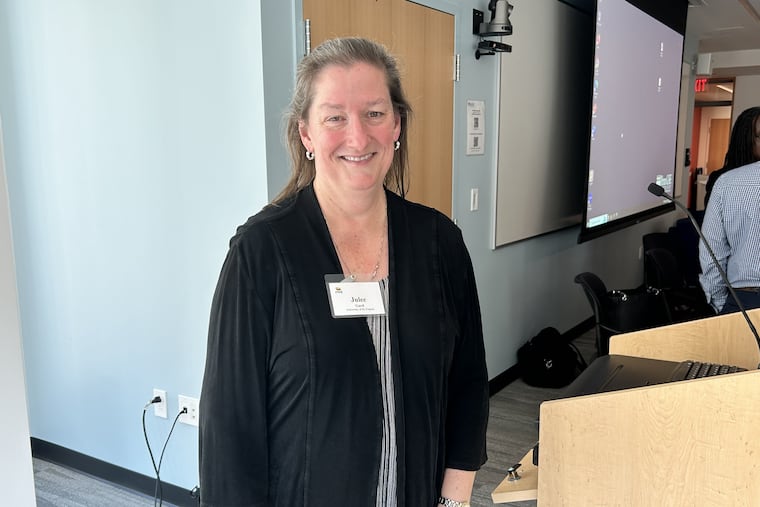A Penn doctoral student created a tool to measure the financial health of universities. Here’s how it works.
Julee Gard's index is made up of eight factors with an emphasis on how well the school covers its operating expenses with revenue from tuition and room and board.

Following the abrupt closure of the University of the Arts in June and amid ongoing volatility in the higher education market, The Inquirer decided to take a close look at the financial health of other small, nonprofit colleges in our region.
At The Inquirer’s request, Julee Gard, a finance executive at a small college in Illinois, assessed 13 small, private local colleges with small endowments using her financial viability index. The schools were Widener, La Salle, Arcadia, Delaware Valley, Gwynedd Mercy, Eastern, Holy Family, Immaculata, and Neumann Universities; Chestnut Hill, Rosemont, and Ursinus Colleges; and Moore College of Art and Design.
Here’s a closer look at Gard and her model.
Who is Julee Gard?
Gard, who has had a 30-plus-year career as a certified public accountant, is vice president for administration and finance at the University of St. Francis in Joliet, Ill., a position she has held for nearly nine years.
She obtained her doctoral degree in higher education management from the University of Pennsylvania’s Graduate School of Education in 2023 and, while there, developed her financial viability index, primarily for assessing the financial health of smaller and medium-sized, mostly tuition-dependent private colleges.
What is her financial viability index?
Her index ranks schools in five categories: poor, marginal, good, very good, and excellent. The index, scored from zero to 100, comprises eight factors with an emphasis on how well the school covers its operating expenses with revenue from tuition and room and board. Key indicators are earnings before interest, depreciation and amortization, and cash flow. Other factors include return on net assets and the amount of reserves a school has relative to a year’s worth of operating expenses.
The system calculates points for each of the eight factors, and adds or subtracts depending on whether the school’s three-year trend is up or down.
How did she use the model for her dissertation?
Gard assessed more than 370 private colleges with full-time equivalent enrollments of fewer than 2,000 students. She used information gleaned from their audited financial statements, starting with fiscal 2016 because that’s when the federal government started requiring nonprofits that receive a certain amount of federal grants to make the statements available on a federal website. Most audits include data on the previous year as well.
What were the findings of her dissertation?
Gard is adamant that the model should not be used to predict college closures.
But in her 2023 dissertation, she noted that nearly 80% of the 39 private institutions that had closed since 2017 were in the category of the poorest financial health immediately prior to closing. Since then, the percentage has grown to about 85%.
She also found that schools in the most dire category can improve. “There were 11 institutions that had [a financial viability index] in red for the four years (FY17 through FY20) in this study and, as of January 2023, none of those 11 institutions has announced their intent to close,” she wrote.
Her tool, she wrote, can “provide small, tuition-dependent institutions with actionable information to help institutional leaders respond timely and effectively.”
What did her review for The Inquirer entail?
She calculated scores for 13 colleges from 2015 to 2023, or 2024 in cases where those latest audited financial statements became publicly available.
What did her review find?
Four schools — La Salle, Rosemont, Delaware Valley, and Neumann — placed in the lowest, or poor, category for fiscal 2023. Neumann improved by one category, to marginal, for 2024, while La Salle remained in the poor category for 2024; audited 2024 financials for the other two schools were not available as of Nov. 8.
Holy Family University was the only school that scored in the top category — excellent — for all years of the study.
Eastern University, Moore College of Art and Design, and Gwynedd Mercy University scored in the second-highest category, or very good.
Ursinus College and Widener and Immaculata Universities were in the second-lowest category, or marginal, while Chestnut Hill and Arcadia were in the middle, or good, category.